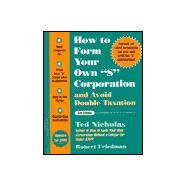
|
1 | (7) | |||
|
3 | (1) | |||
|
3 | (3) | |||
|
6 | (1) | |||
|
7 | (6) | |||
|
7 | (5) | |||
|
12 | (1) | |||
|
12 | (1) | |||
|
13 | (18) | |||
|
13 | (1) | |||
|
14 | (1) | |||
|
15 | (2) | |||
|
17 | (1) | |||
|
18 | (8) | |||
|
26 | (5) | |||
|
31 | (18) | |||
|
31 | (7) | |||
|
38 | (2) | |||
|
40 | (9) | |||
|
49 | (20) | |||
|
49 | (1) | |||
|
50 | (2) | |||
|
52 | (2) | |||
|
54 | (1) | |||
|
54 | (15) | |||
|
69 | (4) | |||
|
70 | (1) | |||
|
71 | (1) | |||
|
72 | (1) | |||
|
73 | (6) | |||
|
74 | (1) | |||
|
75 | (1) | |||
|
76 | (1) | |||
|
77 | (2) | |||
|
79 | (10) | |||
|
79 | (3) | |||
|
82 | (2) | |||
|
84 | (2) | |||
|
86 | (2) | |||
|
88 | (1) | |||
|
89 | (6) | |||
|
89 | (3) | |||
|
92 | (3) | |||
|
95 | (12) | |||
|
96 | (1) | |||
|
97 | (2) | |||
|
99 | (2) | |||
|
101 | (1) | |||
|
101 | (6) | |||
|
107 | (10) | |||
|
107 | (3) | |||
|
110 | (2) | |||
|
112 | (1) | |||
|
112 | (5) | |||
|
117 | (22) | |||
|
118 | (5) | |||
|
123 | (2) | |||
|
125 | (1) | |||
|
125 | (4) | |||
|
129 | (10) | |||
| Appendix A Income Tax Forms for an ``S'' Corporation | 139 | (36) | |||
| Appendix B IRS Schedules D and E---Capital Gains and Losses and Supplemental Income and Loss | 175 | (8) | |||
| Appendix C IRS Form 4562---Depreciation and Amortization | 183 | (16) | |||
| Appendix D IRS Form 4797---Sales of Business Property | 199 | (8) | |||
| Appendix E IRS Form 8825---Rental Real Estate Income and Expenses of a Partnership or an ``S'' Corporation | 207 | (4) | |||
| Index | 211 |
The New copy of this book will include any supplemental materials advertised. Please check the title of the book to determine if it should include any access cards, study guides, lab manuals, CDs, etc.
The Used, Rental and eBook copies of this book are not guaranteed to include any supplemental materials. Typically, only the book itself is included. This is true even if the title states it includes any access cards, study guides, lab manuals, CDs, etc.